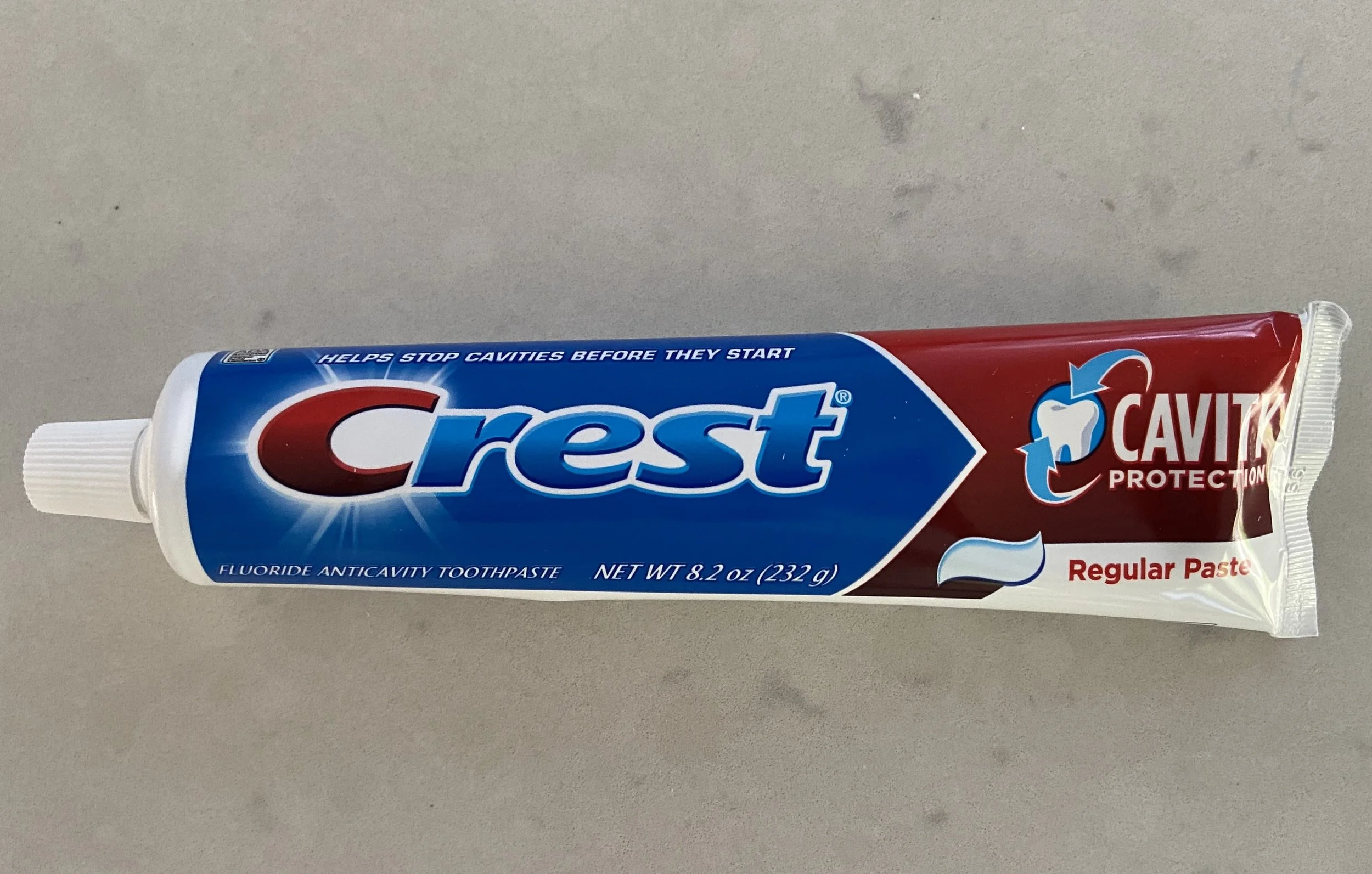The Mystery Surrounding Toothpaste
Are you confused by the sheer number of toothpastes available? You can choose from whitening, desensitizing, cavity protection, “natural,” and more. There are websites touting the “best” toothpastes for the year like some awards ceremony.
Let’s keep things simple. We all use toothpaste, myself included, but toothpaste is not necessary for good oral health. Rather, it is the mechanical action of brushing your teeth to remove the plaque that is essential. There are, however, active ingredients that are beneficial.
The fluoride in toothpaste is important
Fluoride is a naturally occurring mineral that is incorporated into tooth enamel, making teeth stronger and more resistant to cavities. A little goes a long way…too much fluoride can result in fluorosis where the developing teeth grow in discolored, ranging from yellowish to brownish depending on the level of absorbed fluoride. (The benefits of fluoride were accidentally discovered in communities with naturally high levels of fluoride in the water. Although the residents had no cavities, they also had unsightly teeth.)
There is a sweet spot where fluoride is concerned. Beyond that, teeth will not become stronger, but will develop discolored.
There are two types of fluoride: sodium fluoride and stannous fluoride.
It’s important to read the ingredients in your toothpaste packaging. Long in use, sodium fluoride protects your teeth against cavities. It’s also compatible with the abrasives in toothpastes, such as silica and calcium carbonate, that remove surface stain.
Although stannous fluoride has been around since the 1960s, it hasn’t been stable enough to be used as a viable toothpaste additive until recently. Also, the double challenges of its metallic taste and stain causing properties have been corrected. Stannous fluoride has some advantages over sodium fluoride:
It removes some of the harmful bacteria found in plaque and biofilm.
It blocks some of the dentinal tubules.
Why does this matter?
Stannous fluoride helps in the management of gum (periodontal) disease.
It can reduce tooth sensitivity.
I’m seriously considering switching from my sodium fluoride toothpaste to one containing stannous fluoride.
Maybe you don’t like fluoride. You’ve heard it’s toxic. Swallowing an entire tube could result in an emergency room visit, but used as indicated, fluoride has been shown to be safe. Perhaps you object to fluoride added to drinking water as an intrusion on your individual rights? Did you know that along with other ingredients, chlorine is routinely added to drinking water to rid it of microorganisms?
Is there a substitute for fluoride?
Nano-hydroxyapatite has been introduced as an alternative. Makes sense, hydroxyapatite (HA) is one of the components in your enamel. In recent years, companies selling hydroxyapatite toothpastes have mushroomed. The products are usually marketed as “natural” in that they don’t contain artificial chemicals. Understand that “natural” doesn’t necessarily equate with beneficial. After all, lead and arsenic are also naturally occurring.
The early research on hydroxyapatite is promising, but some of the research has been funded by the manufacturers of these toothpastes. For certain groups, such as children and pregnant women where fluorosis and potential toxicity may be an issue, hydroxyapatite is well worth exploring.
It may turn out that hydroxyapatite is a good substitute for fluoride. Time will tell with more unbiased research results.
What does hydroxyapatite do?
Similar to fluoride, it protects teeth against cavities.
Hydroxyapatite also reduces tooth sensitivity at around a 10% concentration. However, many hydroxyapatite toothpastes have lower concentrations or don’t show the concentration on their labels.
Why do hydroxyapatite toothpastes not have the American Dental Association Seal of Acceptance?
Maybe you’ve been told by your dentist to only use products with the ADA Seal of Acceptance? Besides having to show scientific evidence of the product’s efficacy and safety, ADA approved toothpastes must contain fluoride. The ADA currently does not recognize hydroxyapatite as an equally effective substitute. Toothpastes also cannot contain any flavoring agents with sugar.
Crest Cavity Protection - 8.2 ozs. - $3.87
Cost is a consideration.
Here are two random toothpastes:
Crest cavity protection paste – 8.2 ozs. - $3.87
Boka hydroxyapatite toothpaste with 2% HA – 4 ozs. - $12.99
Doing the math, Crest sells for 48 cents per ounce. The Boka is $3.25 per ounce, making it almost 7 times more expensive than the Crest.
No judgement…you decide.











